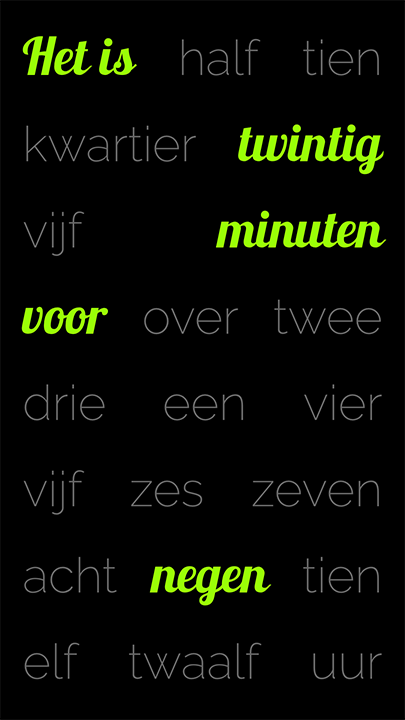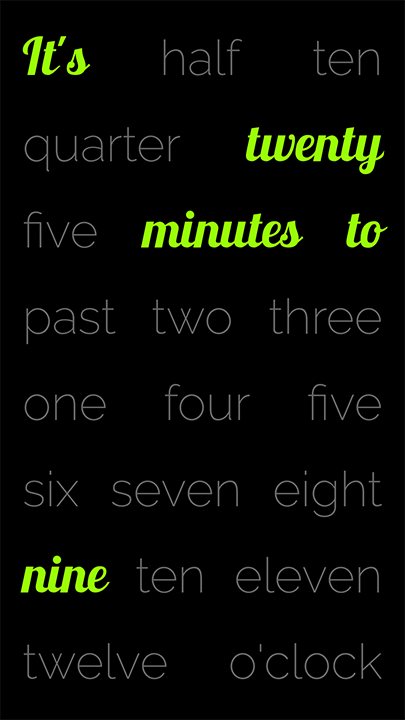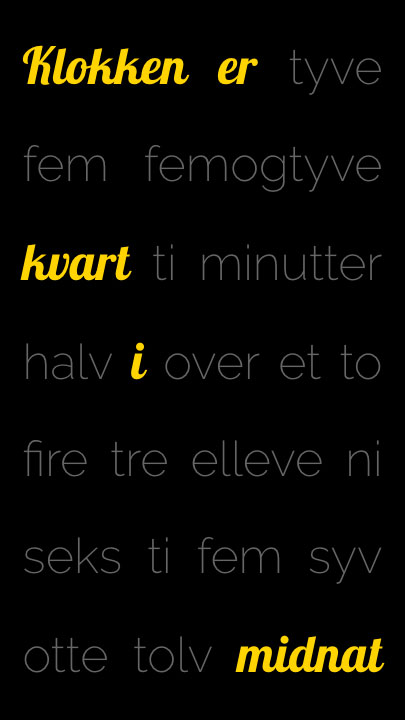Read the statement by Michael Teeuw here.
Help Translating Word Clock
-
@strawberry-3.141 I worked your Swiss German layout into the code. I couldn’t do a straight merge as I was also in the middle of re-architecting the code base. But I copied your layout files and modified them to work with the new system. I also rearranged some of the layout to have the words spaced out better. I don’t think I messed up the translation as a result – having spent so much time on the German one helped me understand yours – but when I get a few free seconds, I’ll post screenshots so you can validate.
-
@strawberry-3-141 As promised, here are screenshots of the layout integrated, both for the tall and wide layouts. Please let me know if it looks good
Tall:
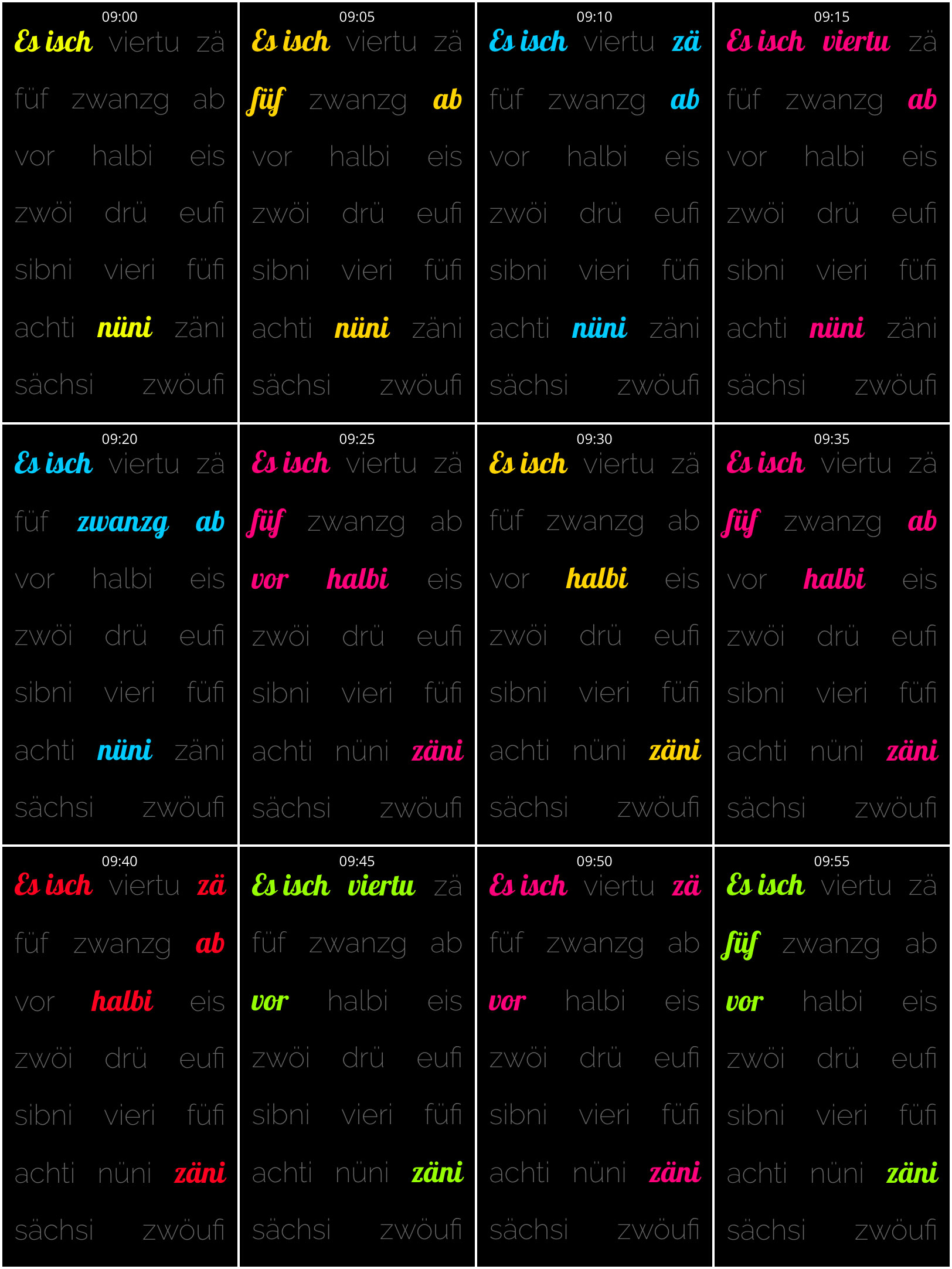
Wide:
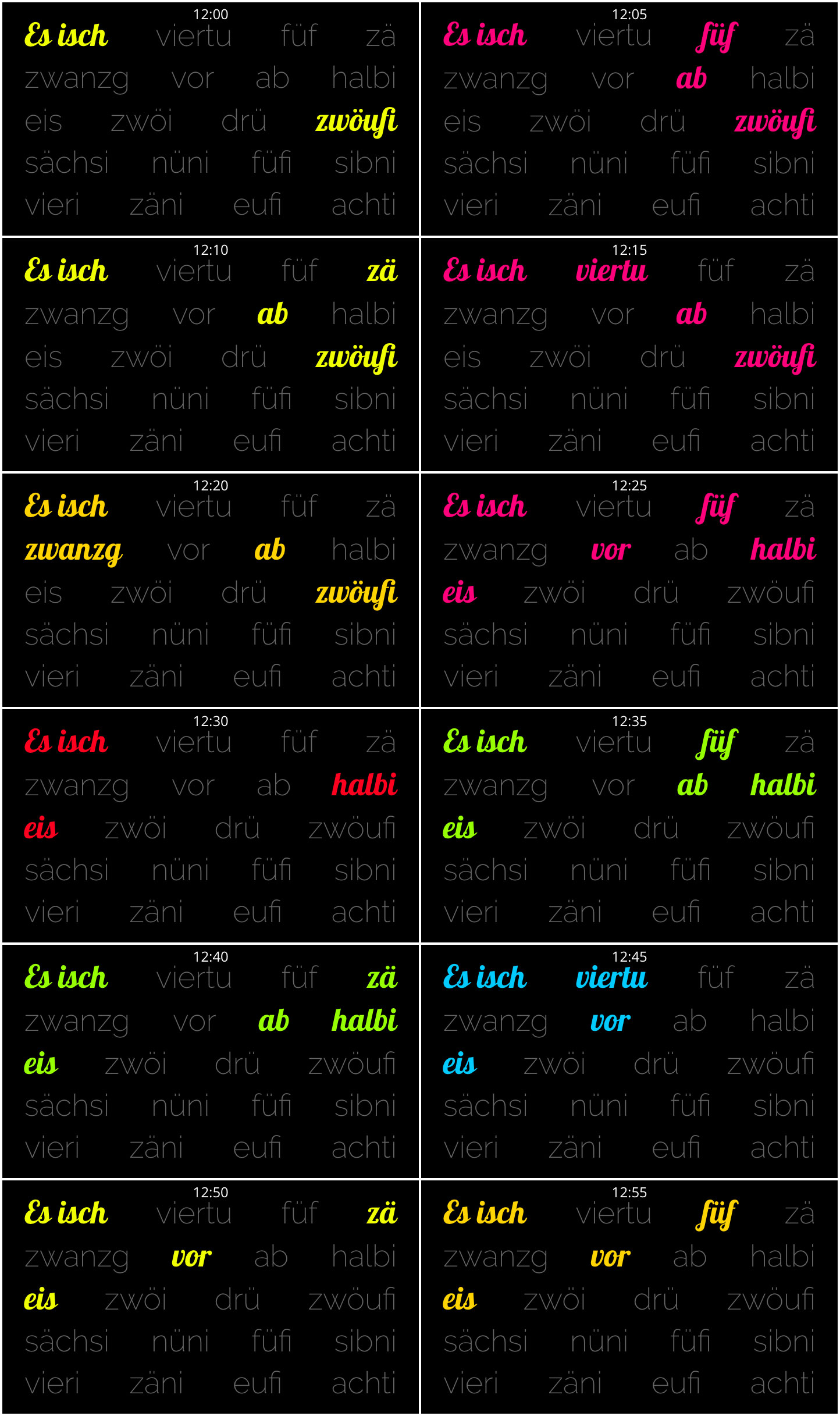
-
09:40 would be correct:
Es isch zwanzg vor zäni12:40 the same:
Es isch zwanzg vor eisThe rest looks fine :-)
By the way (you dont have to change it) but usualy we say “zwänzg” not “zwanzg” ;-)
-
-
@kruemel Thanks. I fixed this, and will be pushing an update shortly.
-
@Sean I’ve got the CJK fonts worked out. I have one question though: Should these be in vertical layout? Typically I’ve laid out the other languages in sequential rows from read left-to-right from the top row down, but it is possible to arrange these in sequential columns, read top-to-bottom from the left column to the right (or even read from right to left). Should that be the case for any of the CJK layouts?
-
@j.e.f.f said in Help Translating Word Clock:
@Sean I’ve got the CJK fonts worked out. I have one question though: Should these be in vertical layout? Typically I’ve laid out the other languages in sequential rows from read left-to-right from the top row down, but it is possible to arrange these in sequential columns, read top-to-bottom from the left column to the right (or even read from right to left). Should that be the case for any of the CJK layouts?
In Korea and China, People don’t use vertical layout anymore. Left-to-Right & Top-to-Bottom is enough.
In Japan, I think 50-50. Many books or magazines are written vertically (Top-to-Bottom & Right-to-Left). But the Horizontal layout is also used.(Left-to-Right & Top-to-Bottom) -
-
@Sean Ok Here is my attempt at the Japanese formal language clock, using vertical RTL layout. How did I do?
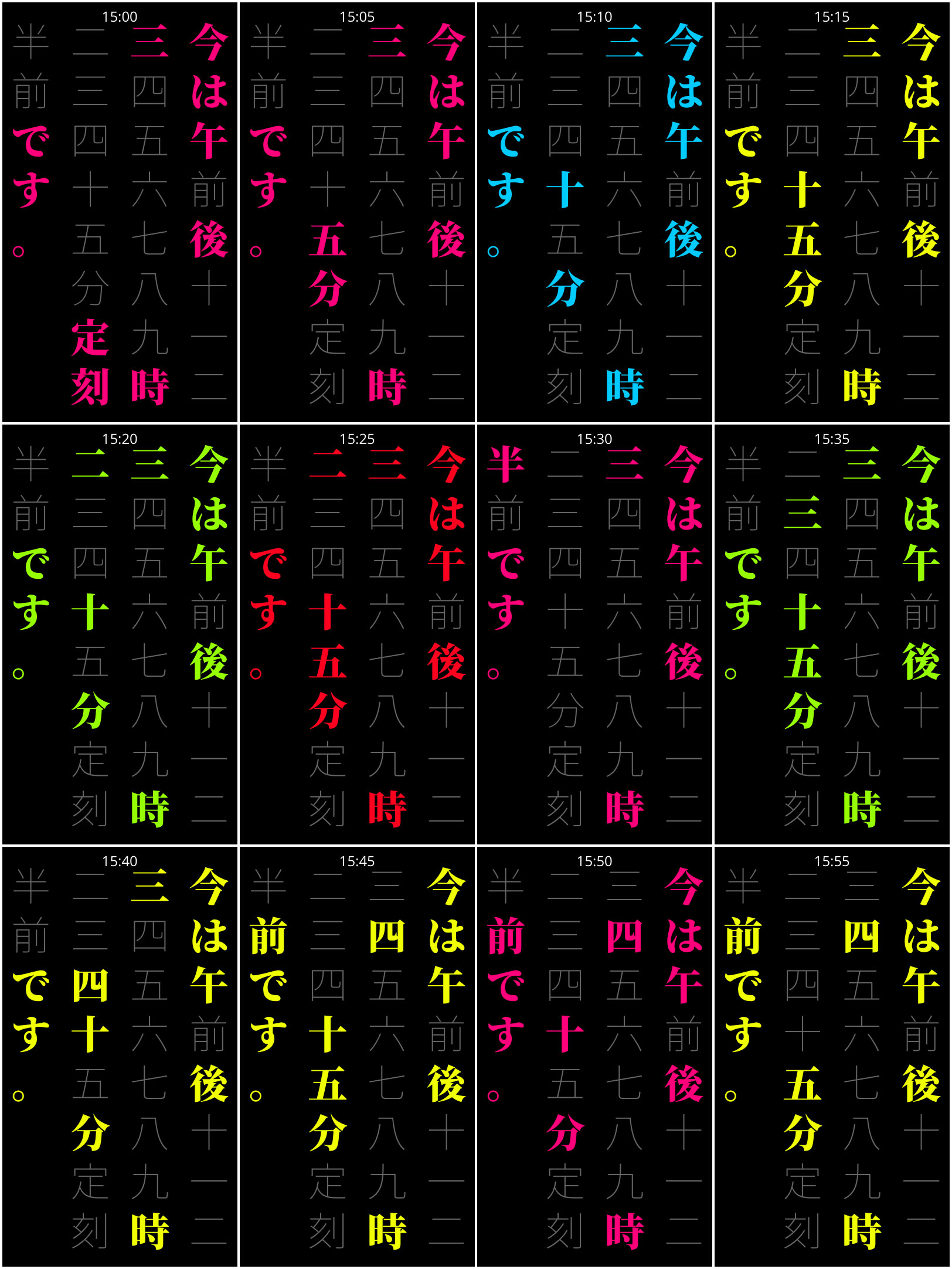
-
@j.e.f.f
Great!!
Only one, ‘午前’, ‘午後’ is a word unit which has meaning , so it’s better not to divide ‘午’ and ‘後’. (If you have enough space).
If you have still enough space, I can suggest you more natural form, but it needs some space. However current view is good enough.
